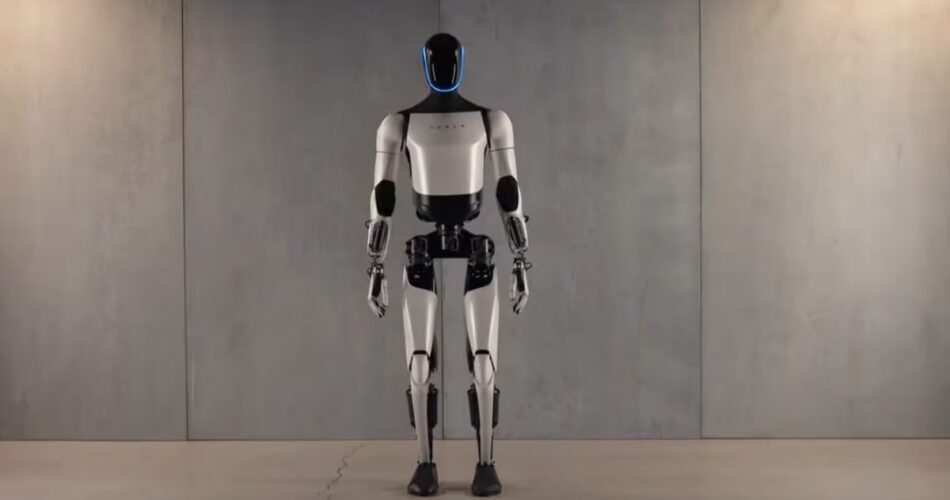Tesla unveils next-gen Optimus robot with major upgrades
Optimus-Gen 2, the second version of Tesla’s Optimus humanoid robot, was revealed. Tesla has released a video demonstrating the many advancements the company has made to the Optimus-Gen 2 after a prototype was unveiled at the Tesla AI Day event.
The fact that Tesla and Elon Musk are leading the charge in improving these robots is likewise not surprising. Compared to their first humanoid robot, the Bumblebee from 2022, and the Optimus Gen 1 from earlier this year, the most recent version, the Optimus Gen 2, is a significant advance. It has undergone numerous hardware improvements, most notably the incorporation of electronics and newly precise and accurate Tesla-designed actuators and sensors. You get articulated toe sections based on human foot geometry to allow it to walk a little more naturally.
According to this article, it can move its head in a more human-like way because it now has a 2-DoF actuated neck, which can be either amazing or terrifying.
In engineering and physics, “DoF” stands for “Degrees of Freedom.” The term is used to describe the number of independent parameters or coordinates that define the configuration of a mechanical system. In the context of a 2-DoF system, it means there are two independent ways in which the system can move or be positioned.
For example, in robotics or mechanical systems, a 2-DoF robot might have two joints that allow it to move in two different directions. This could be a rotational joint and a translational joint, or two rotational joints about different axes.
With 11 degrees of freedom and tactile sensing in every digit, its hands can now handle eggs and other small objects without dropping them. It can move around more readily than its predecessors because it is now 10 kg lighter and has a 30% walk speed boost, though you can still outrun it if necessary. It can perform exercises like squats and has better balance and full-body control as a result of these advancements.
The humanoid robot known as Optimus is intended to assist people by performing some of the tedious tasks that we would want to avoid. As of right now, there is no word on whether or not the Gen 2 will be produced and sold; it is still in the prototype stage. It gives us time to consider if we are willing to risk a robot takeover in the future to eliminate tedious duties from our daily lives.
In the next few years, after being widely used in factories and warehouses, we may see the first robots enter our homes for the first time. Together with the artificial intelligence that already makes it possible for us to interact effectively thanks to LLMs (Large Language Models), robots could really get closer to the idea we have always had of them.
